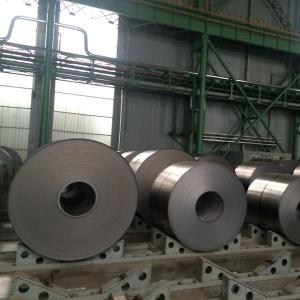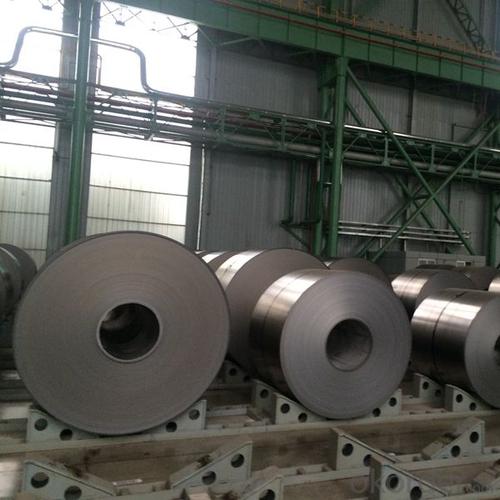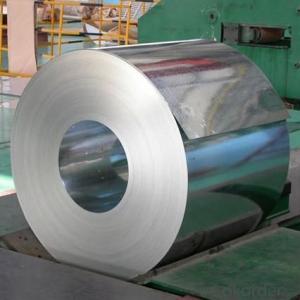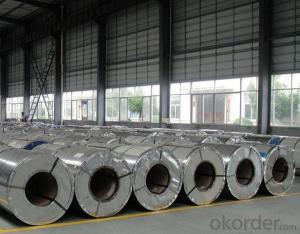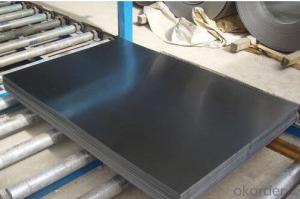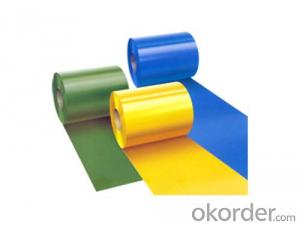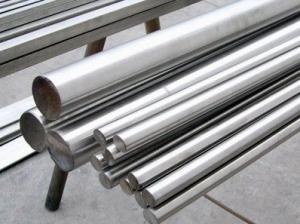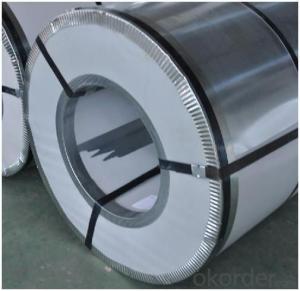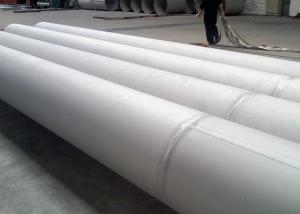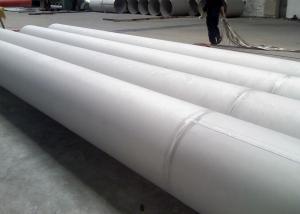Hot-Selling High Quality Low Price Galvanized Steel Coil
- Loading Port:
- Tianjin
- Payment Terms:
- TT OR LC
- Min Order Qty:
- 50 m.t.
- Supply Capability:
- 20000 m.t./month
OKorder Service Pledge
OKorder Financial Service
You Might Also Like
Specification
DESCRIPTION FOR GALVANIZED STEEL COILS:
Mian Quality Standard | JIS G3302, EN10346, DIN17162, ASTM A653/653M, GB2518 |
Process | hot dip galvanizing |
Process Speed | 1#. Max 120m/min, 2#. Max 130m/min |
Thickness | 1#. 0.25mm upto 1.20mm, 2#. 0.25mm upto 1.0mm |
Width | 900mm upto 1300mm |
Surface Finish | zero spangles, skinpassed, oiled,chromated, tension level, |
Coating | zinc layer mass on both sides from 30 g/m2 upto 180g/m2 |
Yield Strength | 220Mpa upto 750Mpa |
Weight per Coil | max 15,000kg |
Inner Diameter | φ 508mm |
Outer Diameter | max φ 2,050mm |
Finished Internal Diameter | Φ 508mm or φ 610mm |
Finished Coil Weight | 1#. max 10,000kg, 2#. max 15,000kg |
Packing | Mill's Export Standard Packing |
Capacity | 300,000 tons/year |
EXPORT STANDARD FOR GALVANIZED STEEL COILS:
-Axial and circumferential steel straps with seal (4 steel straps each)
-VCI Anti-rust kraft paper
-Water-proofing plastic
-Pearl wool (coil surface)
-Steel cover (coil surface/bore)
-Plastic cover (coil sides)
-Inside and outside corner protectors
Or According customers' requirements(Usually only for domestic)
PACKAGING &DELIVERY FOR GALVANIZED STEEL COILS:
Packaging Detail Standard export packing or following customer's demand
Delivery Time: Within 30-40 days after deposit or according to the order quantity
PACKAGING &DELIVERY FOR GALVANIZED STEEL COILS:
1.Big thickness:by bulk vessel
2.Small thickness:packed by steel strips and shipped by container
3.According to the requirements of customers'
TRADE TERMS FOR GALVANIZED STEEL COILS:FOB, CFR, CIF
DETAILED PICTURES FOR GALVANIZED STEEL COILS:

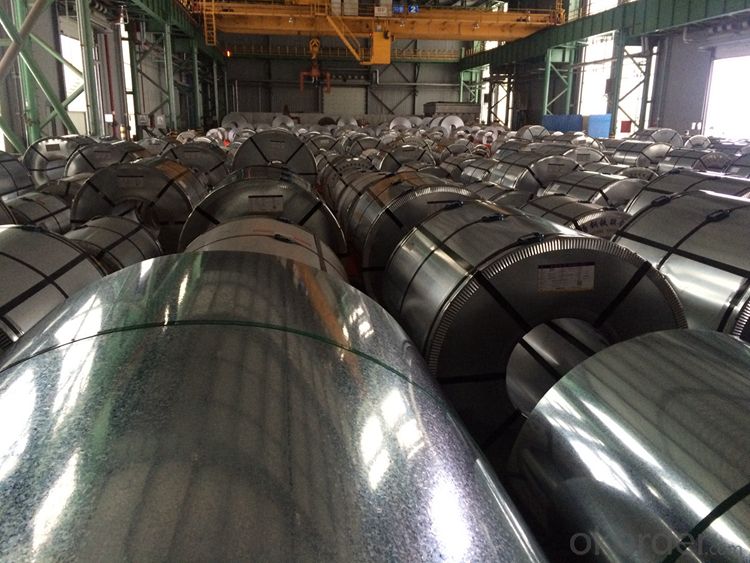
APPLICATION FOR GALVANIZED STEEL COILS:
Galvanized steel products are mainly used in construction, light industry, automobile, agriculture , fishery and commercial industries. They have great advantages:1.it has small harm to the environment and it can be recycled, greatly lighten the stress to the environment.2.it is convenient to process,easy to construct and has good waterproof effect.
FAQ FOR GALVANIZED STEEL COILS:
Q:Do you have OEM service?
A: Yes.Variety of products size,quality and quantity can be customized according to your need.
Q:Could you support free sample?
A:Yes.We can supply FREE samples.But the delivery charges will be covered by our customers.
Q:What are the advantages of your company ?
A: We have many professionals, technical personnel, more competitive prices and best after-dales service than other steel companies.
Q:Can you arrange the shipment ?
A: Sure we can help you with the shipment. We have forwarders who have cooperated with us for many years.
- Q: Can stainless steel sheets be used for hygienic environments?
- Stainless steel sheets are indeed suitable for hygienic environments. This is because stainless steel possesses certain inherent properties that render it highly resistant to corrosion, heat, and chemical damage, thus making it a popular choice for such environments. Its surface is smooth and non-porous, which facilitates easy cleaning and prevents the accumulation of bacteria, mold, or other contaminants. Furthermore, stainless steel is non-reactive and does not release any harmful substances, making it ideal for sensitive environments like food processing facilities, hospitals, pharmaceutical labs, and cleanrooms. Moreover, stainless steel is both durable and long-lasting, ensuring excellent hygiene and cleanliness for extended periods. All in all, stainless steel sheets are a dependable and hygienic option for various applications in environments that prioritize cleanliness and sanitation.
- Q: How to clean stainless steel plate cleaning?
- If ordinary water leaves some dirt or grease, try adding a mild detergent to the water. The method I used was derived from natural, biodegradable detergent and found that it removed a little water and missed it, including some oils. If you clean stainless steel pots or cutlery, this is the best way to use them. The food on the cooked food can usually be removed from the pan, soaked in soapy water, and with a mild sponge sponge pad. Don't be impatient to use steel wool, it may scratch stainless steel or leave particles that may rust. Again, remember to rinse and dry the stainless steel after cleaning.
- Q: Can stainless steel sheets be used in high-temperature environments?
- Stainless steel sheets are capable of being utilized in high-temperature environments. The heat resistance properties of stainless steel are well-known, rendering it suitable for various applications in such environments. The maximum operating temperature of stainless steel and its composition are determined by the specific grade used. Austenitic stainless steels, such as grades 304 and 316, possess the ability to endure temperatures up to 1600°F (870°C) without compromising their mechanical strength or corrosion resistance. In contrast, higher alloyed stainless steels like grades 309 and 310 are specifically engineered to handle higher temperatures, reaching approximately 2100°F (1150°C). These stainless steel sheets find common use in industries such as power generation, chemical processing, furnace manufacturing, and aerospace, where exposure to extreme heat is necessary.
- Q: What are the benefits of using brushed stainless steel sheets?
- Using brushed stainless steel sheets has several advantages. To begin with, their sleek and attractive appearance makes them a popular choice for appliances, countertops, and backsplashes. The brushed finish adds a unique texture and matte appearance, bringing sophistication to any space. Additionally, brushed stainless steel sheets are highly durable and resistant to corrosion, making them suitable for indoor and outdoor use. They can withstand harsh conditions such as chemicals, moisture, and extreme temperatures. Moreover, their brushed finish helps to hide fingerprints, smudges, and scratches, making them easy to clean and maintain. Furthermore, brushed stainless steel sheets are hygienic and inhibit bacteria growth, making them ideal for the food and medical industries. Their smooth surface allows for easy cleaning and disinfection, ensuring a safe and sanitary environment. Moreover, these sheets offer excellent longevity and are a cost-effective investment. They resist wear and tear, maintaining their appearance for many years without the need for replacement. Lastly, brushed stainless steel sheets are versatile and can be customized to fit different design preferences. They can be easily cut, shaped, and formed into various sizes and shapes, allowing for endless design possibilities. Whether you prefer a modern, industrial look or a more traditional and elegant style, brushed stainless steel sheets can be tailored to meet your specific needs. In conclusion, the use of brushed stainless steel sheets offers benefits such as an attractive appearance, durability, corrosion resistance, hygienic properties, longevity, and versatility. Whether used in residential, commercial, or industrial settings, these sheets provide a wide range of advantages, making them a popular choice for various applications.
- Q: Who knows the production process of stainless steel plate?
- Sanitary conditions are important for many industries, such as food processing, catering, brewing and chemical processes. In these applications, the surface must be cleaned daily and chemical cleaning agents are often used.Stainless steel is the best material in this area, in public places, the surface of the stainless steel is often scribbles, but an important characteristic is it can be washed off, this is a remarkable characteristic of stainless steel is better than aluminum. The surface of aluminum tends to leave traces that are often difficult to remove. When cleaning the stainless steel surface, it should be cleaned along the lines of stainless steel, because some of the surface finishing lines are unidirectional.Stainless steel most suitable for hospital or other health conditions of critical field, such as: food processing, food, brewing and chemical industry, this is not only because it is easy to clean every day, sometimes the use of chemical cleaning agents, but also because it is not easy to breed bacteria. Tests show that stainless steel has the same properties in this field as glass and ceramics.
- Q: What is the Young's modulus of stainless steel sheets?
- The Young's modulus of stainless steel sheets is subject to variation based on the particular grade and composition of the stainless steel. In general, stainless steel possesses a substantial Young's modulus, typically falling within the range of 190 to 220 gigapascals (GPa). Consequently, stainless steel sheets exhibit considerable rigidity and resilience against deformation when subjected to external stress. Nevertheless, it is crucial to acknowledge that the precise Young's modulus can marginally differ due to factors such as temperature, manufacturing techniques, and the specific alloy employed in the stainless steel sheets.
- Q: How do stainless steel sheets compare to other materials, such as aluminum or carbon steel?
- Stainless steel sheets offer distinct advantages when compared to other materials like aluminum or carbon steel. They have superior corrosion resistance, making them ideal for applications in harsh environments or industries like food processing. Stainless steel sheets also possess high heat resistance, strength, and durability, making them suitable for various structural and industrial purposes. While aluminum is lightweight and has good conductivity, it lacks the same level of strength and corrosion resistance. Carbon steel, on the other hand, is strong but more susceptible to corrosion. Overall, stainless steel sheets provide a balance of strength, durability, and corrosion resistance, making them a preferred choice in many industries.
- Q: Are stainless steel sheets good for high-temperature applications?
- Yes, stainless steel sheets are excellent for high-temperature applications. Stainless steel has a high melting point, typically ranging from 1400 to 1450 degrees Celsius (2552 to 2642 degrees Fahrenheit), making it suitable for use in environments with elevated temperatures. Additionally, stainless steel exhibits excellent resistance to oxidation at high temperatures, which helps prevent the formation of scales or rust that can weaken the material. It also has good thermal conductivity, allowing for efficient heat transfer. These properties make stainless steel sheets a reliable choice for a wide range of high-temperature applications, including industrial furnaces, heat exchangers, boilers, and exhaust systems.
- Q: Can stainless steel sheets be used for medical instrument trays?
- Yes, stainless steel sheets can be used for medical instrument trays. Stainless steel is a commonly used material in the medical industry due to its excellent corrosion resistance, durability, and ease of cleaning. Medical instrument trays are used to store and organize various medical instruments during procedures. Stainless steel sheets are ideal for this purpose as they are non-reactive and can withstand frequent sterilization processes such as autoclaving. Additionally, stainless steel has a smooth surface that is resistant to scratches and dents, ensuring the trays remain hygienic and easy to clean. Overall, stainless steel sheets are a reliable and suitable material choice for medical instrument trays.
- Q: How do I determine the flatness of stainless steel sheets?
- To determine the flatness of stainless steel sheets, you can use various methods such as visual inspection, measuring with a straight edge or ruler, or utilizing specialized tools like a flatness gauge or a laser level. Visual inspection involves observing the surface for any visible curvature or warping. Measuring with a straight edge or ruler can help identify any gaps or deviations from a flat surface. Specialized tools like a flatness gauge or a laser level provide more precise measurements by quantifying the degree of flatness.
Send your message to us
Hot-Selling High Quality Low Price Galvanized Steel Coil
- Loading Port:
- Tianjin
- Payment Terms:
- TT OR LC
- Min Order Qty:
- 50 m.t.
- Supply Capability:
- 20000 m.t./month
OKorder Service Pledge
OKorder Financial Service
Similar products
Hot products
Hot Searches
Related keywords
